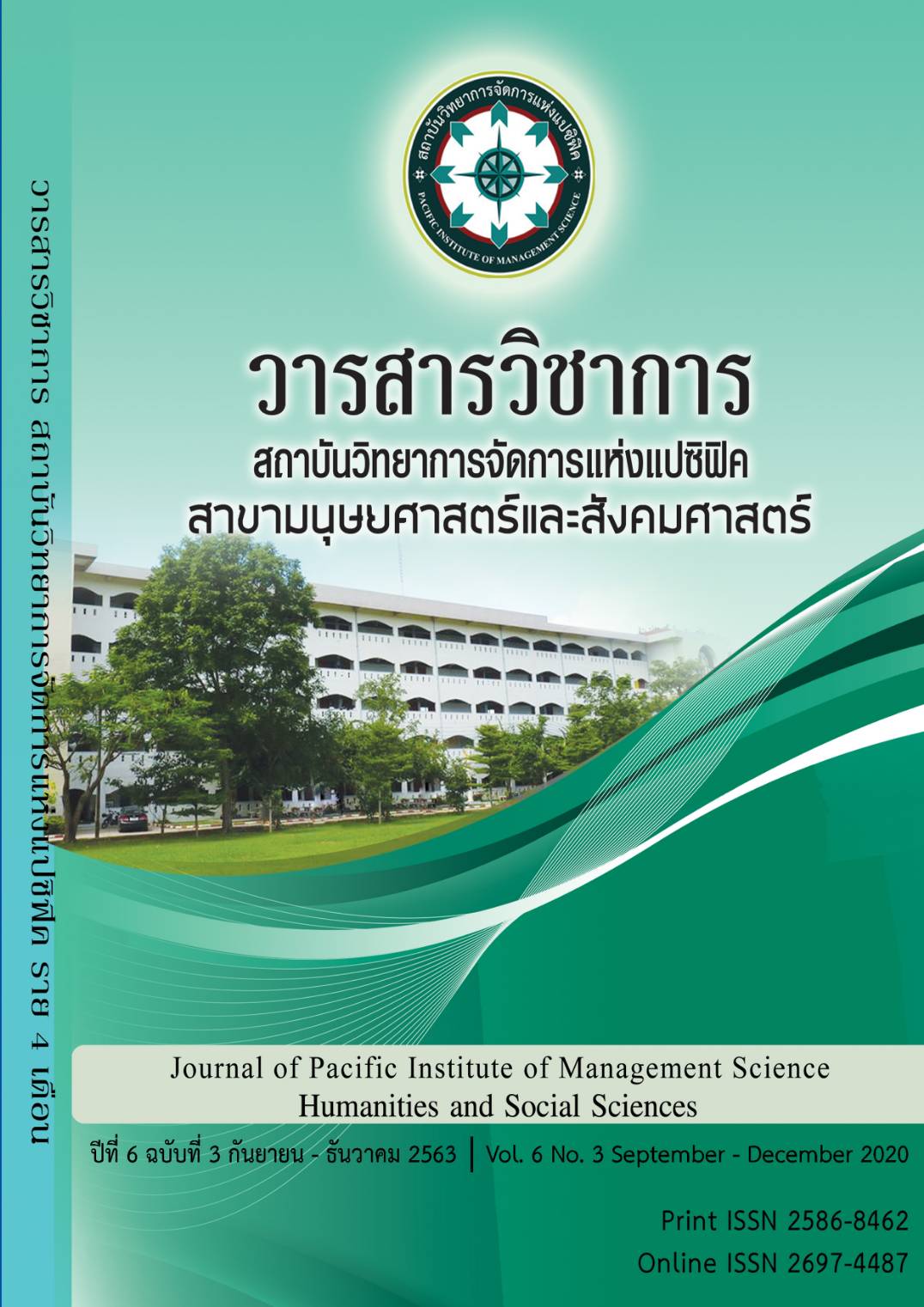The Development Guidelines for The Vocational Competency of Secondary Student
Keywords:
Vocational competency, Secondary studentsAbstract
The purposes of this research were to identify: 1) the components of Vocational competency of secondary students and 2) the development guidelines for Vocational competency of secondary students. The sample were 97 basic education schools, Determined by Taro Yamane sample size table at the confidence level of 90%. The respondents were the School director, the deputy director of academic affairs and the head of career and Technology department, with a total respondent of 291.The instruments used to collect data were interview, opinionnaire and workshop recording form. The statistics used in data analysis were frequency, percentage, arithmetic mean, standard deviation, exploratory factor analysis, and content analysis. The research findings revealed that:
1. There were seven components of vocational competency of secondary students : 1) morality and ethical competency , 2) analytical thinking competency, 3) self-control competency, 4) information and technology competency , 5) vocational skills competency, 6) teamwork competency, and 7) communication and creative thinking competency.
2. The development guidelines for the 7 vocational competencies of secondary students consisted 135 items as follows: 1) morality and ethical competency: 39 Items, 2) analytical thinking competency: 24 Items, 3) self-control competency: 21 Items, 4) information and technology competency: 15 items, 5) vocational skills competency: 15 Items 6) team work competency: 12 Items, and 7) communication and creative thinking competency: 9 Items
References
กฤษมันต์ วัฒนาณรงค์. สมรรถนะวิชาชีพ (Vocational Competency). เข้าถึงเมื่อ 5 เมษายน 2560. เข้าถึงจาก https://www.thairath.co.th/content
กระทรวงศึกษาธิการ. พระราชบัญญัติการศึกษาแห่งชาติ พ.ศ.2542 และที่แก้ไขเพิ่มเติม (ฉบับที่ 2) พ.ศ. 2545. กรุงเทพฯ: คุรุสภา ลาดพร้าว, 2542.
หลักสูตรแกนกลางการศึกษาขั้นพื้นฐาน พุทธศักราช 2551. กรุงเทพฯ: คุรุสภา ลาดพร้าว, 2551.
การจัดการศึกษาขั้นพื้นฐานเพื่อการมีงานทำตามแนวทางการจัดการเรียนรู้ในศตวรรษที่ 21. กรุงเทพฯ: ชุมนุมสหกรณ์การเกษตรแห่งประเทศไทย, 2559.
วิจารณ์ พานิช. วิถีสร้างการเรียนรู้เพื่อศิษย์ในศตวรรษที่ 21. กรุงเทพฯ: มูลนิธิสดศรี – สฤษดิ์วงศ์, 2555.
ไพฑูรย์ สินลารัตน์. ทักษะแห่งศตวรรษที่ 21 ต้องก้าวให้พ้นกับดักของตะวันตก. กรุงเทพฯ: มหาวิทยาลัยธุรกิจบัณฑิตย์, 2557.
สำนักงานเลขาธิการสภาการศึกษา กระทรวงศึกษาธิการ. กรอบคุณวุฒิแห่งชาติ พ.ศ.2560. กรุงเทพฯ: พริกหวานกราฟฟิค, 2560.
สุกัญญา รัศมีธรรมโชติ. แนวทางการพัฒนาศักยภาพมนุษย์ด้วย Competency based learning พิมพ์ครั้งที่ 2. กรุงเทพฯ: ศิริวัฒนาอินเตอร์พริ้นท์, 2548.
Bellanca, J. and Brandt, R. 21st century skills: rethinking how students learn Bloomington. IN: Solution Tree Press, 2010.
Confederation of British Industry. Qualified to compete. Creating a world class qualifications framework. Available from http://www.cbi.org.uk/home.html, viewed 18 January 2001, 1998.
Gardner, H. “Five Minds for the Future” 21st century skills: rethinking how students learn. Edited by James Bellanca and Ron Brandt. Bloomington: Solution tree press, 2010.
Genesh, S. Competency Based HRM: A Strategic Resource for Competency Mapping, Assessment and Development Centres. New Delhi, Tata: McGraw-Hill, 2004.
McAshan, H. H. Competency-Based Education and Behavioral Objective. New Jersey: Prentice-Hall, 1981.
Schoenfeldt, N. Vocational Learning: Techning, Curriculum, Plannings. Expert Verlag, Grafenau, 1980.
Spencer, Jr. Lyle, M., and Spencer, S. M. Competency at work: Models for Superior Performance. The United State of America: John Wiley and Sons, 1993.
Downloads
Published
Issue
Section
License
Copyright (c) 2020 Pacific Institute of Management Science

This work is licensed under a Creative Commons Attribution-NonCommercial-NoDerivatives 4.0 International License.
บทความที่ได้รับการตีพิมพ์เป็นลิขสิทธิ์ของ สถาบันวิทยาการจัดการแห่งแปซิฟิค
ข้อความที่ปรากฏในบทความแต่ละเรื่องในวารสารวิชาการเล่มนี้เป็นความคิดเห็นส่วนตัวของผู้เขียนแต่ละท่านไม่เกี่ยวข้องกับสถาบันวิทยาการจัดการแห่งแปซิฟิค และคณาจารย์ท่านอื่นๆในสถาบันฯ แต่อย่างใด ความรับผิดชอบองค์ประกอบทั้งหมดของบทความแต่ละเรื่องเป็นของผู้เขียนแต่ละท่าน หากมีความผิดพลาดใดๆ ผู้เขียนแต่ละท่านจะรับผิดชอบบทความของตนเองแต่ผู้เดียว







